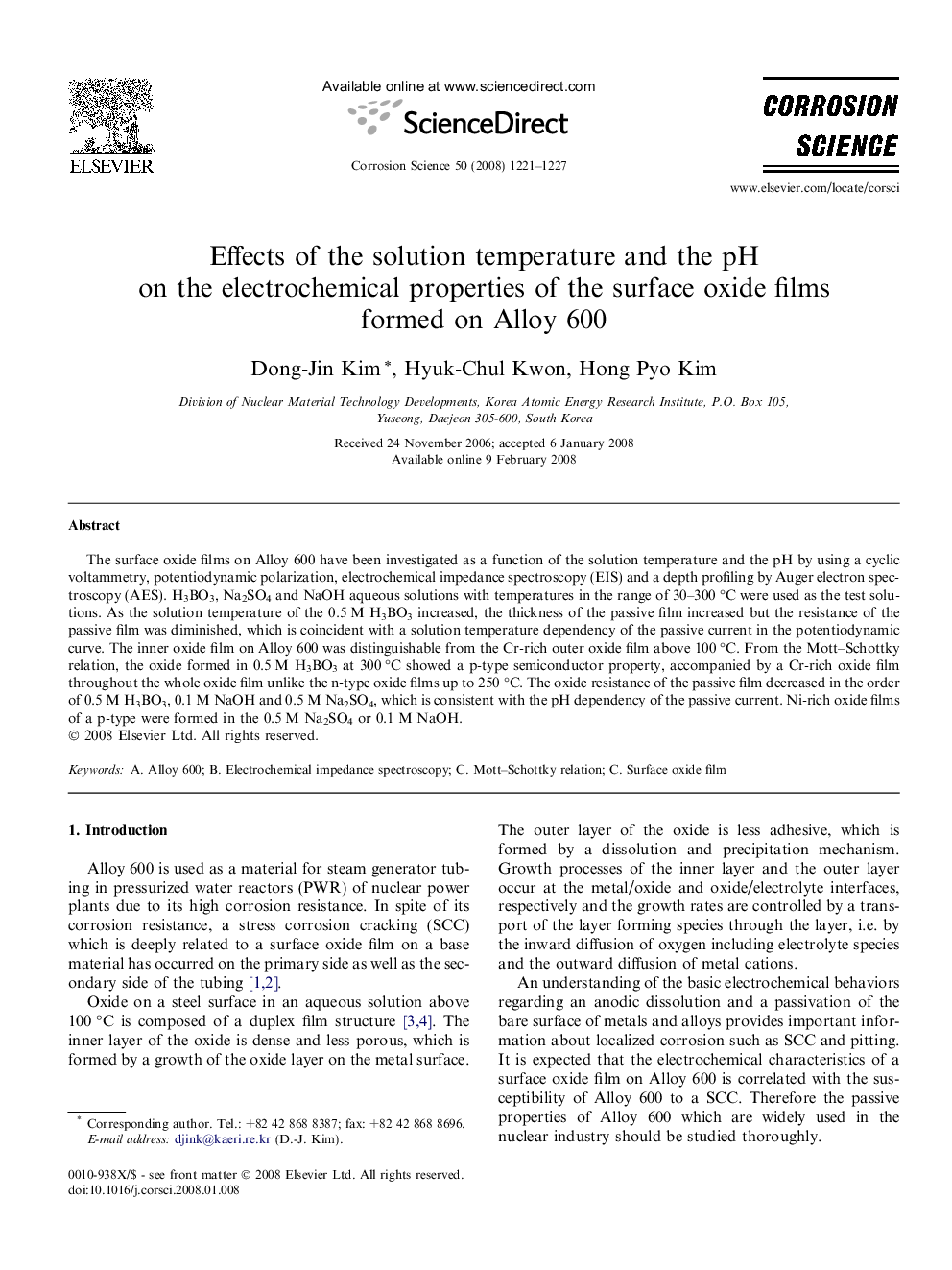| Article ID | Journal | Published Year | Pages | File Type |
|---|---|---|---|---|
| 1471755 | Corrosion Science | 2008 | 7 Pages |
The surface oxide films on Alloy 600 have been investigated as a function of the solution temperature and the pH by using a cyclic voltammetry, potentiodynamic polarization, electrochemical impedance spectroscopy (EIS) and a depth profiling by Auger electron spectroscopy (AES). H3BO3, Na2SO4 and NaOH aqueous solutions with temperatures in the range of 30–300 °C were used as the test solutions. As the solution temperature of the 0.5 M H3BO3 increased, the thickness of the passive film increased but the resistance of the passive film was diminished, which is coincident with a solution temperature dependency of the passive current in the potentiodynamic curve. The inner oxide film on Alloy 600 was distinguishable from the Cr-rich outer oxide film above 100 °C. From the Mott–Schottky relation, the oxide formed in 0.5 M H3BO3 at 300 °C showed a p-type semiconductor property, accompanied by a Cr-rich oxide film throughout the whole oxide film unlike the n-type oxide films up to 250 °C. The oxide resistance of the passive film decreased in the order of 0.5 M H3BO3, 0.1 M NaOH and 0.5 M Na2SO4, which is consistent with the pH dependency of the passive current. Ni-rich oxide films of a p-type were formed in the 0.5 M Na2SO4 or 0.1 M NaOH.
